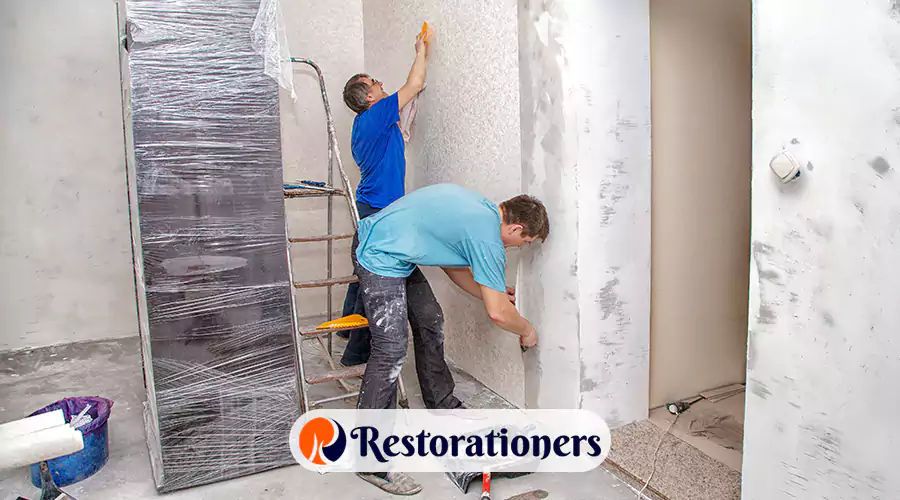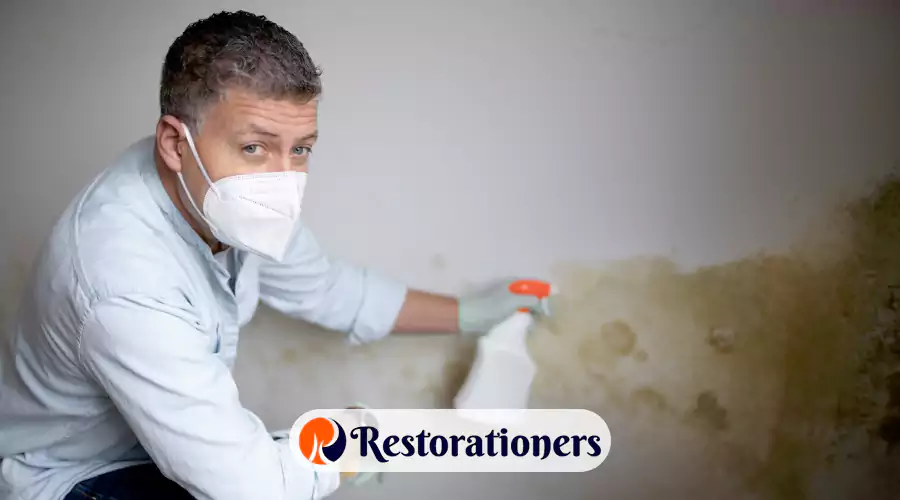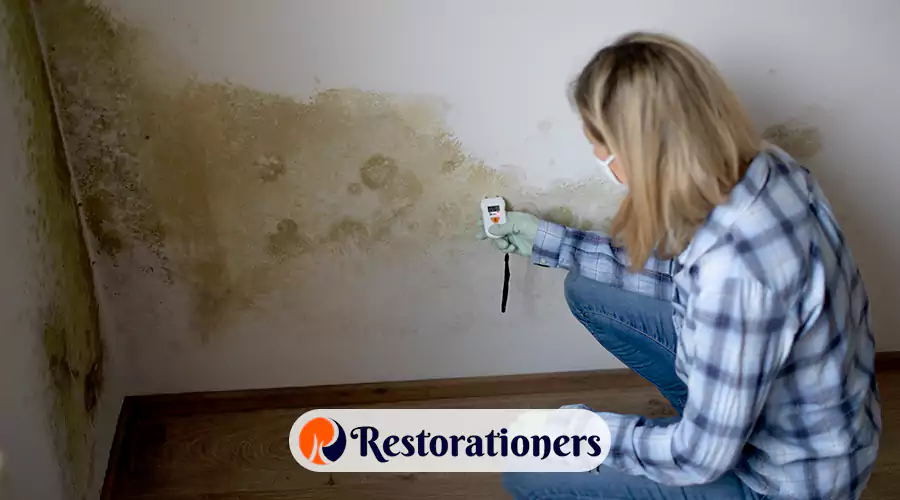Question Regarding Moisture Removal in Denton
I’m helping a homeowner sell her property in Denton. During the buyer’s inspection, the report showed possible moisture inside one of the walls using a Thermal Snapshot. We’re already planning to redo the roof and flashing, but we’re not sure where the moisture came from or how bad it is. What should we do before listing the house for sale?
Hidden moisture can damage walls and lower your home’s value. Learn how to detect, fix, and prevent it before putting your property on the market.John Davis
Expert Answer: Understanding and Fixing Wall Moisture
That’s a great question, Karina — and it’s a very common situation for homeowners in Denton, Texas. Moisture inside walls is one of those hidden problems that can sneak up on you, especially in our area where humidity, rain, and wind-driven storms are frequent. You might not see any Water Spots or damage yet, but moisture behind the wall can still cause serious long-term issues if not handled correctly.
Let’s talk about why moisture gets trapped, how to locate it, what happens if you ignore it, and how to fix and prevent it the right way.
Moisture Causes: Why It Happens Inside Walls in Denton, TX
In Denton and the North Texas region, the weather plays a big role in moisture problems. Our humid climate and sudden storms create the perfect conditions for water intrusion. Even a small gap in roof flashing, a worn shingle, or a loose vent seal can let rainwater slip into the structure. Once that moisture enters, it often travels down into the wall cavity where there’s very little airflow to dry it out.
Besides roofing issues, moisture can also come from other sources like small plumbing leaks, poor attic ventilation that causes condensation, or Leaky Window Seals that let rain seep inside. Because drywall and insulation absorb and hold moisture, these areas can stay damp for weeks without any visible signs.
When this trapped moisture isn’t discovered early, it can lead to mold growth, soft drywall, musty odors, and eventually rotting wood framing. In a home that’s being sold, this can easily delay or derail the transaction if the buyer’s inspection picks up hidden water again.
Moisture Detection: How to Find Hidden Moisture Before It Spreads
The most effective way to detect hidden moisture is with a professional moisture inspection. Restoration experts use thermal imaging cameras, moisture meters, and humidity sensors to locate and measure the presence of moisture behind walls. These tools, often part of Emergency Restoration Services, help determine if the problem is new or old, active or residual.
A professional inspection also helps identify the exact source of the moisture. In many cases, homeowners assume it’s a plumbing issue, but the real cause might be roof flashing or an exterior joint. Finding the source first is critical — if you just repair drywall without stopping the leak, the problem will come right back.
Moisture Removal: How to Dry Out the Affected Wall
Once the source of the moisture has been fixed, the drying process should begin immediately. Restoration teams typically set up high-powered air movers and dehumidifiers to extract moisture from the air and wall cavities. This process can take anywhere from 24 to 72 hours depending on how much water has been absorbed.
It’s important to keep the area sealed during drying so the humidity stays consistent. If moisture readings remain high after drying, or if there’s a lingering musty smell, a mold inspection should follow. Moisture trapped behind drywall for too long is the leading cause of mold growth — and mold can develop in as little as two days.
Once drying is complete, any damaged drywall, insulation, or framing should be replaced. Before closing up the wall, professionals apply an Anti-Microbial Treatment to prevent future mold or bacterial growth. Afterward, the wall can be refinished and repainted as normal.
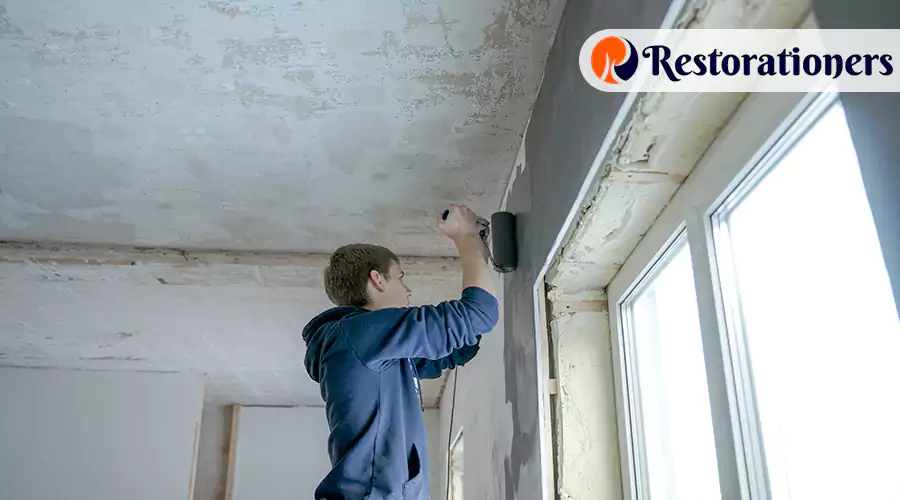
Moisture Testing at Home: Simple DIY Checks
If you want to double-check the moisture yourself before calling a professional, you can start with a home moisture meter — these are affordable and easy to use. Test the area that appeared wet in the inspection report and note the readings. A wall with normal moisture will typically read between 6% and 12%. Anything higher is cause for concern.
You can also look for Indirect Signs of Moisture, such as cool spots on the wall, condensation near baseboards, or faint discoloration. Running a dehumidifier in that room for a couple of days can help temporarily, but if the readings don’t go down or if the area feels damp again after rain, that’s a clear sign the moisture source hasn’t been fixed.
Moisture Damage: What Happens If You Don’t Act Quickly
Even if the issue seems small, moisture inside walls can cause serious long-term damage if ignored. Within 24 to 48 hours, trapped moisture can start producing mold spores. Over time, it softens drywall, weakens framing, and causes unpleasant odors that are hard to eliminate.
For homeowners preparing to sell, Moisture Damage can also create disclosure issues. Buyers may hesitate or demand costly repairs before closing. Acting quickly not only protects your home but also prevents the moisture problem from becoming a full-blown restoration project later on.
Moisture Prevention: How to Keep Walls Dry in the Future
Preventing moisture problems in the future starts with regular home maintenance. Have your roof inspected at least once a year, ideally before the spring storm season begins. Make sure your attic has proper ventilation so moisture doesn’t condense on rafters and drip down walls. Keep an eye on window and door seals, and reapply caulking every few years.
Indoor humidity control is also key — use dehumidifiers during the summer to keep indoor moisture levels below 50%. After heavy rain, walk through your home and feel the upper corners of your walls and ceilings. Catching a cool, damp area early can save you from a much bigger problem later.
Moisture Questions Homeowners Often Ask
1️. Can a small roof leak really cause wall moisture?
Yes, it absolutely can. Even a pinhole leak can let water travel along roof beams and settle inside a wall cavity. The moisture might not appear near the roof at all — it often surfaces several feet away because water follows the path of least resistance.
2️. Can I dry out moisture in a wall without opening it?
In some minor cases, yes. Professionals can use an inject-dry system that blows warm, dry air into the wall cavity through small holes near the baseboard. However, if the wall has been damp for more than a few days or there’s any suspicion of mold, the safest option is to open it and inspect it thoroughly.
3️. How can I tell if moisture has already caused mold?
Look for signs like a musty odor, peeling or bubbling paint, or dark patches that seem to spread. Mold often grows inside walls long before it becomes visible. If you suspect it, have a certified mold test or moisture inspection done to confirm it.
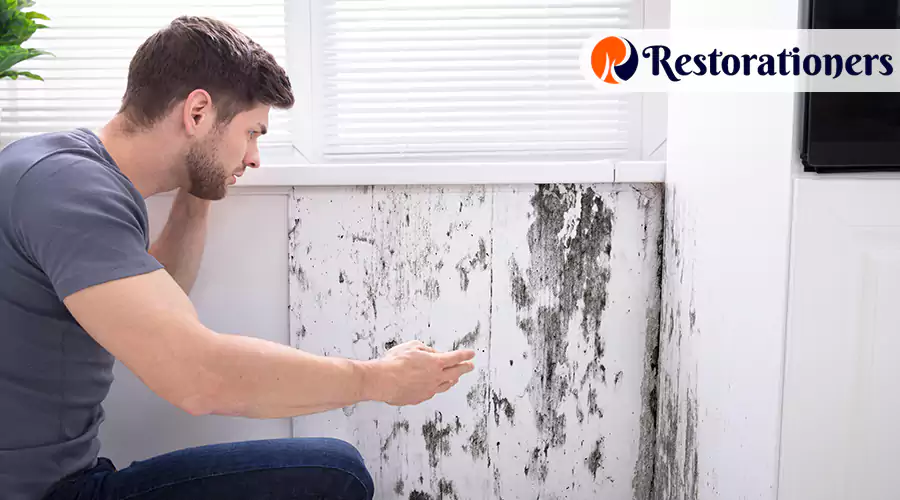
Final Expert Advice on Moisture Control
Even if the moisture issue doesn’t seem urgent, it’s important not to delay action. Moisture trapped inside walls never evaporates completely on its own — it either spreads or starts to feed mold. By identifying the source, drying it properly, and ensuring the repair is done right, you’ll prevent costly damage and protect the home’s value before selling.
In Denton’s humid climate, moisture problems are common, but they’re entirely manageable with prompt attention and a little preventive care. The key is simple: find the moisture early, fix it completely, and keep your walls dry for good.
 Damage-Specific RestorationGeneral Restoration ServicesSpecialized RestorationCleanup & Removal ServicesBack to Main MenuDamage-Specific RestorationWater Mitigation Water Damage Flood Damage Basement Flood Clean Up Storm Damage Restoration Hurricane Damage Restoration Winter Storm Damage Restoration Water Leak Detection Services Fire Damage Smoke Damage Restoration Soot Removal Mold Damage Mold Remediation Biohazard Cleanup Earthquake Restoration Mudslide Damage Restoration Disaster RestorationBack to Main MenuGeneral Restoration ServicesEmergency Restoration Services Commercial Restoration Services Residential Restoration Services Advanced Restoration Building Restoration House Restoration Restoration Contractors Structural Restoration 24 Hour Emergency Water Damage RestorationBack to Main MenuSpecialized RestorationDocument Restoration Hardwood Floor Refinishing Marble Restoration Kitchen Restoration Bathroom Restoration Roof Restoration Wood Restoration Wood Floor Restoration Tile Restoration Concrete Restoration Foundation RestorationBack to Main MenuCleanup & Removal ServicesOdor Removal Services Air Duct Cleaning Hazardous Waste Disposal Asbestos Abatement Demolition Contractors Emergency Board Up
Damage-Specific RestorationGeneral Restoration ServicesSpecialized RestorationCleanup & Removal ServicesBack to Main MenuDamage-Specific RestorationWater Mitigation Water Damage Flood Damage Basement Flood Clean Up Storm Damage Restoration Hurricane Damage Restoration Winter Storm Damage Restoration Water Leak Detection Services Fire Damage Smoke Damage Restoration Soot Removal Mold Damage Mold Remediation Biohazard Cleanup Earthquake Restoration Mudslide Damage Restoration Disaster RestorationBack to Main MenuGeneral Restoration ServicesEmergency Restoration Services Commercial Restoration Services Residential Restoration Services Advanced Restoration Building Restoration House Restoration Restoration Contractors Structural Restoration 24 Hour Emergency Water Damage RestorationBack to Main MenuSpecialized RestorationDocument Restoration Hardwood Floor Refinishing Marble Restoration Kitchen Restoration Bathroom Restoration Roof Restoration Wood Restoration Wood Floor Restoration Tile Restoration Concrete Restoration Foundation RestorationBack to Main MenuCleanup & Removal ServicesOdor Removal Services Air Duct Cleaning Hazardous Waste Disposal Asbestos Abatement Demolition Contractors Emergency Board Up